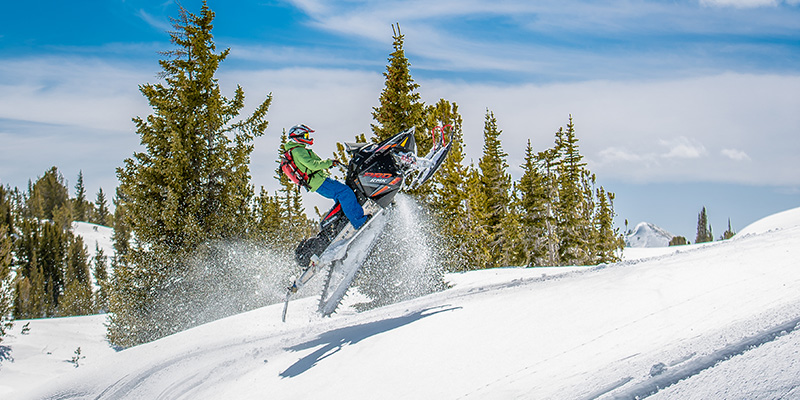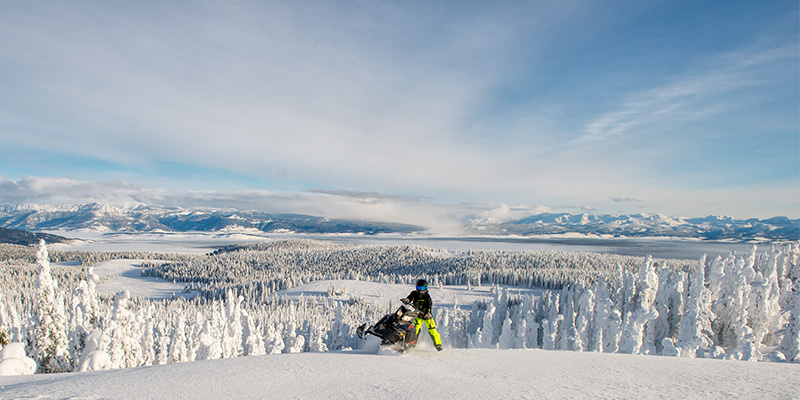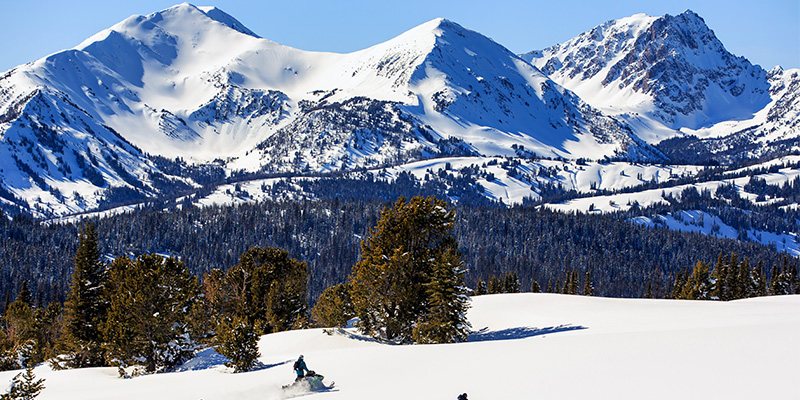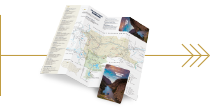Planning a Snowmobile Vacation to Montana's Yellowstone Country
 Cooke City, Photo by Dan Armstrong
Cooke City, Photo by Dan Armstrong
It seems a bit hasty to talk about snowmobiling while it's still warm out. However, snowmobilers know the early bird gets the worm (and the hotel room), and winter trip planning for many sledding enthusiasts is generally complete by Thanksgiving. Montana’s Yellowstone Country is a key destination for snowmobilers, and it’s no wonder — the trails are vast and the hill-climbing steep.
Cooke City and Silver Gate
Surrounded by Gallatin National Forest, the Absaroka-Beartooth Wilderness, and Yellowstone National Park, Cooke City, and Silver Gate are known for the deep powder that can last well into the spring. In fact, spring sledding can be fantastic with late-season storms coming through. Average snowfall totals 200 inches per year, and it sticks around at an elevation of 7,600 feet. Winter access is only through Yellowstone National Park, and the road goes right through the famed Lamar Valley, which is known as one of the best places for spotting wild wolves. They say winter is the best time since seeing their coats against the snowy backdrop is easier.
If you don’t want to haul your sled, rent snowmobiles at Cooke City Exxon or Beartooth Adventures. Guided tours are also available.
Popular Trails
Daisy Pass- The shortest and easiest way to the high country, plenty of powder fields, hill climbing, and tree riding.
Lulu Pass Trail-Groomed trail with lots of opportunity for boondocking. Great for a wide range of riders.
Round Lake Trail - A scenic 2-mile, groomed loop to the 31-acre, Round Lake.
 West Yellowstone, Photo by Ken Takata
West Yellowstone, Photo by Ken Takata
West Yellowstone
The area most popular with snowmobilers is West Yellowstone, which has over 400 miles of a well-kept trail system that connects with the city streets. There aren’t too many places where you can walk out of your hotel room and hop on your sled. The terrain is so varied that riders of any level can enjoy themselves, from gentle groomed trails to pristine powder meadows and exhilarating backcountry. (Keep an eye out for “snow ghosts,” trees so covered in snow they resemble ghosts.)
Popular Trails
Yellowstone National Park- Great for guided tours and beginners.
Madison Arm Loop- 20 miles of flat, windy trail, great for families and beginners.
South Plateau Trail-13 miles of scenic riding southward, eventually meeting the Black Bear Cutoff (leading to Idaho) or, at 16.2 miles, to the Black Canyon Trail.
Two Top Trail- A variety of terrain with a 2,000-foot elevation gain, the upper sections of the groomed trail feature remarkable views , including Wyoming’s renowned Tetons, Yellowstone National Park and the Centennial Mountains of Idaho.
 Big Sky, Photo by Colton Stiffler
Big Sky, Photo by Colton Stiffler
Big Sky
Big Sky is another local favorite. It’s known for being a ski destination, but riders love the less-crowded areas and the access to trails like Buck Ridge, with 16 miles of groomed and maintained trails, or Taylor Fork, which is groomed weekly.
If you’re planning a trip, you can’t go wrong in any of these areas, but you will want to reserve your hotel. Rooms book quickly during peak times of the year, such as holidays, and lodging is limited in smaller areas.
Popular Trails
Doe Creek Trail - Great for beginners and leads into Buck Ridge Trail at the end.
Buck Ridge Trail - A favorite among locals, with 16 miles of groomed and maintained trails. There’s ample parking at the trailhead.
Taylor Fork - Groomed weekly in winter, there’s also a large parking area just off Highway 91.
Keep in mind, big mountains bring the inherent risk of avalanches. If you’re taking a guided tour, your guide will have checked the conditions and provided proper gear. If you’re setting out on your own, an avalanche course is recommended. Always check Gallatin National Forest Avalanche Center before riding in the backcountry and be sure to carry equipment such as an avalanche transceiver, shovel and probe, and know how to use them.
Familiarize yourself with the trails you’re riding and carry a paper map — cell service can be spotty in the backcountry!


